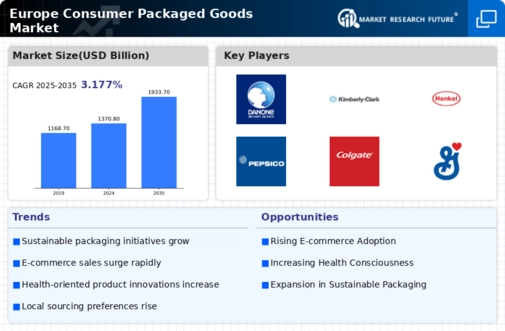The competitive landscape of the Europe Consumer Packaged Goods Market is characterized by a dynamic interplay of established brands, emerging players, and evolving consumer preferences. The region reflects a diverse consumer base with varying tastes and purchasing behaviors, leading companies to continually adapt their products, marketing strategies, and distribution channels. Key drivers of competition include innovation, sustainability, brand loyalty, and the integration of digital technologies. As companies seek to carve out market share, understanding consumer insights and preferences has become paramount, with a strong emphasis on meeting the demands for convenience, quality, and eco-friendliness.
This competitive environment fosters collaboration and strategic partnerships, impacting product development and market penetration effectively.Procter and Gamble has cemented its presence in the Europe Consumer Packaged Goods Market through a comprehensive portfolio that spans various categories such as personal care, home care, and health and hygiene products. The company’s strengths lie in its strong brand equity, innovative product offerings, and robust supply chain management, enabling it to respond swiftly to market changes. Procter and Gamble focuses on sustainability and has made significant strides to reduce its environmental impact, aligning with consumer trends towards eco-conscious purchasing.
The company also invests heavily in marketing and consumer engagement, enhancing its ability to capture and retain customer loyalty across the continent, thereby maintaining a competitive edge in a crowded marketplace.Danone's footprint in the Europe Consumer Packaged Goods Market reflects its commitment to health and wellness, offering a variety of products primarily in dairy, plant-based alternatives, and nutrition segments. The company leverages its strengths in innovation and research to deliver products that cater to health-conscious consumers, such as yogurt and fortified food items.
Danone has established a strong market presence through localized strategies and collaborations, allowing it to respond effectively to regional consumer needs. In recent years, the company has pursued strategic mergers and acquisitions to expand its product portfolio and market reach within Europe, fortifying its competitive position. Danone's emphasis on sustainability and responsible sourcing also resonates with European consumers, enhancing brand loyalty and driving growth in this vibrant market.






















Leave a Comment